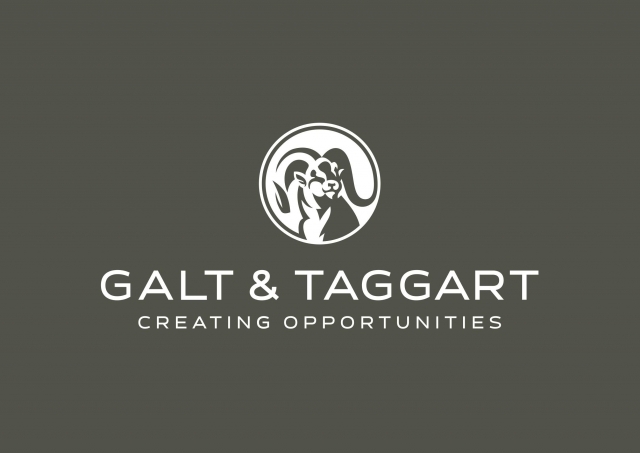Hazelnut - Georgia’s Precious Commodity
Hazelnut production and handling is a multi-billion dollar industry. The bulk of hazelnut supply goes to confectioneries, with Italian Ferrero accounting for the largest share. Ferrero purchases ¼ of the world hazelnut supply to produce its famous Nutella and Ferrero Rocher. In fact, hazelnut is such a critical ingredient in producing the world’s favorite chocolate hazelnut spread that when frosts in Turkey slashed the 2014 hazelnut harvest in half, consumers all over the world stocked up on Nutella, as prices were expected to spike on the back of reduced supply.
Georgia is conveniently located in a climate zone where favorable conditions make growing hazelnuts easy, mostly in a narrow strip of land along the coast of the Black Sea. The Ministry of Agriculture (MoA) of Georgia has estimated the average cost for 1 hectare of hazelnut orchard to be GEL 5,700 (~US$ 2,300). Depending on the hazelnut variety and climate conditions for the harvest year, this translates into an average yield of 1 to 3 tons per hectare and can generate revenue of up to US$9,000 at current world market prices (~US$ 4.3/kg for in-shell hazelnut). However, hazelnut orchards need up to 7 years to reach their full yield capacity. Georgian hazelnut growers are dependent on world market conditions, but in the long term, hazelnut demand is expected to increase and Georgia has a real shot at becoming one of the top 3 hazelnut suppliers in the world. Ferrero alone is a multi-billion dollar consumer of hazelnuts, with each jar of Nutella containing up to 50 hazelnuts (~170gr).
Food and Agriculture Organization (FAO) of the United Nations (UN) estimated the world production of shelled hazelnuts at 858,697 tons in 2013, with Turkey having a dominant market share of 63.9%, followed by Italy (13.1%), USA (4.7%), Georgia (4.6%), and Azerbaijan (3.6%). In terms of total hazelnut planting area, Georgia is in third place after Turkey and Italy. Turkish hazelnut trade takes place on the Giresun Commodity Exchange in Turkey, which makes it the heart of the global hazelnut trade and the investor’s premier source of data and forecasts on the Turkish harvest. In 2014 Georgia produced 37,000 tons, the second highest annual figure after the 2013 harvest of 40,000 tons, generating total export revenue of US$ 183mn, which placed hazelnuts among Georgia’s top 4 exports, surpassing even wine. Aside from the large harvest volume, the high export earnings in 2014 can be attributed to the global deficit on hazelnuts caused by the frosts in Turkey. Subsequently, Ferrero decided to purchase the family-owned Oltan, Turkey’s biggest hazelnut exporter, to strengthen its presence in the hazelnut market. Ferrero also owns a large hazelnut orchard in Western Georgia, home to most of the hazelnut production, and recently acquired 700 hectares of hazelnut orchard in Serbia.
Hazelnut production in Georgia increased at a compound annual growth rate (CAGR) of 6% over 2006 – 2014, from 24,000 to 37,000 tons. If Georgia is able to integrate efficient farming practices in order to increase quality and productivity and expand the planted area, the country has an opportunity to land a place among the top 3 hazelnut suppliers in the world, after Turkey and Italy. The American hazelnut industry, even though technology-intensive, is facing difficulties at growing and harvesting the hazelnut, as the hazelnut type most demanded on the world commodity market is being affected by a region-specific disease. USA has only 1.4% of total hazelnut planting area (~12,200 ha), but its yield is much higher than in Georgia, as American hazelnut growers integrate innovative farming and best practices.

Turkey is a price setter on the hazelnut market. In 2014 when the hazelnut harvest suffered from a severe frost in Turkey and output almost halved, hazelnut prices on the world market doubled from US$ 5.5 to US$ 11.5. This was rather beneficial for other nut exporting countries, including Georgia. In August 2015, prices were back to $4.5-5.0, and dipped further in September as the harvest outperformed forecasts. In 2015, according to the Istanbul Exporters Union, Turkey has already earned US$ 2.67bn in 7M15 and exported 208,000 tons of hazelnut. Georgian hazelnut exports in 1H15 increased 163% y/y in dollar terms and generated US$73.4mn in export revenues, up from US$ 28mn last year. Roughly ¾ of Georgian hazelnut exports went to the EU, where prices were 43% higher on average than in the CIS countries (2014 World Bank estimates). Italy, Germany, and Spain jointly imported 46% of hazelnuts exported from Georgia. The largest importer from the CIS countries was Kazakhstan, accounting for 8% of Georgian hazelnut exports.
Several international donors are active in the country with the aim to improve competitiveness of Georgian agricultural products, along with the living standards of the rural population. EU (through ENPARD - European Neighbourhood Programme for Agriculture and Rural Development) and USAID supply interested parties with relevant research and farmers with technical assistance, aiming to increase productivity and harvest quality. Furthermore, investment opportunities abound for post-harvest handling. As the harvest keeps increasing year after year, the drying, storage, and de-husking facilities are in high demand. The government of Georgia recently opened a hazelnut drying and storage facility in Darcheli, Zugdidi, close to the hazelnut growing grounds. The facility has drying and storage capacities of 24 tons and 500 tons, respectively, as per the MoA. Upon completion, the facility will be transferred to Darcheli Tkhili – a 500 member cooperative, as part of an effort to stimulate the development of farming cooperatives in Georgia. totalizatorebi.ge აქ თქვენ შეძლებთ მოიპოვოთ ყველა საჭირო და სანდო ინფორმაცია საუკეთესო და პოპულარული ბუკმეკერული კომპანიების შესახებ, რათა გააკეთოთ სწორი არჩევანი და დადოთ ფსონი გამარჯვებაზე! Further investments will be necessary as the current post-harvest handling capacity is far from sufficient to accommodate the total harvest, according to the Hazelnut Exporters Association.
Tamara Kurdadze (Galt and Taggart)











